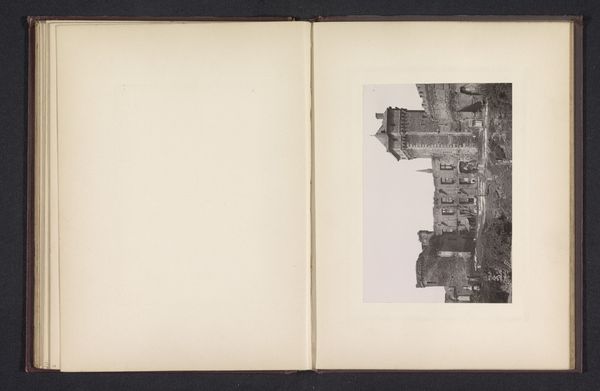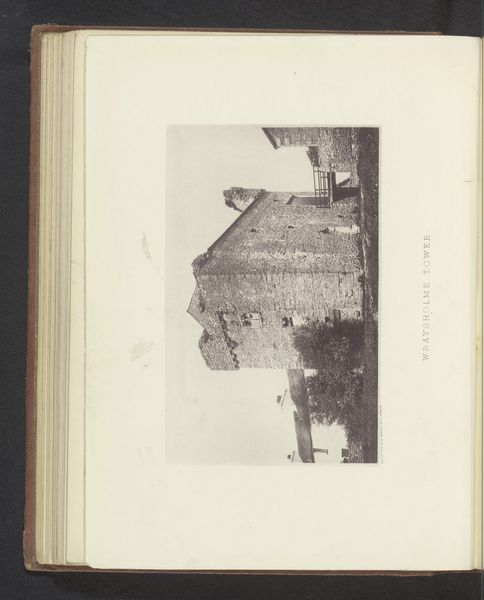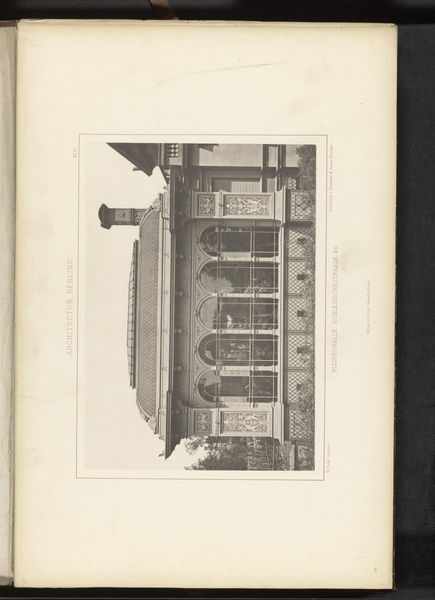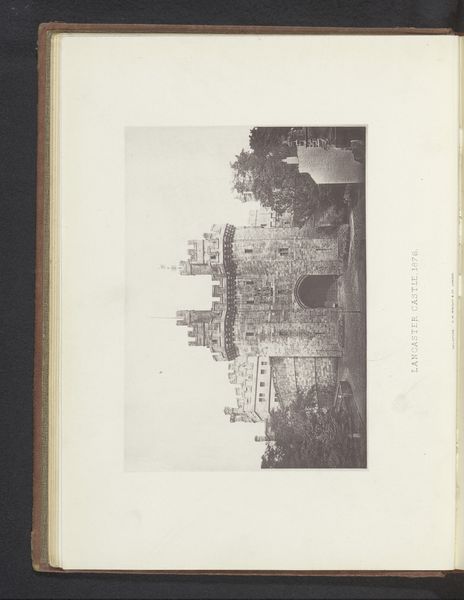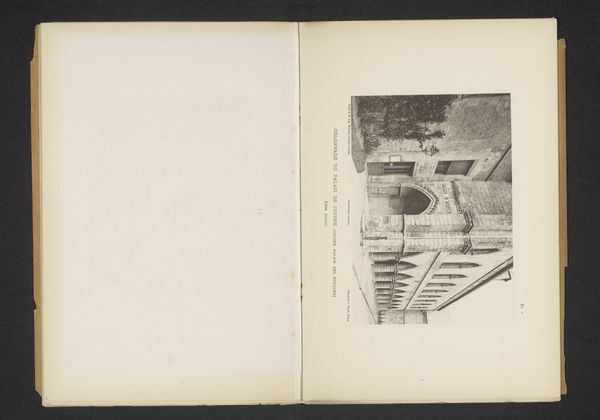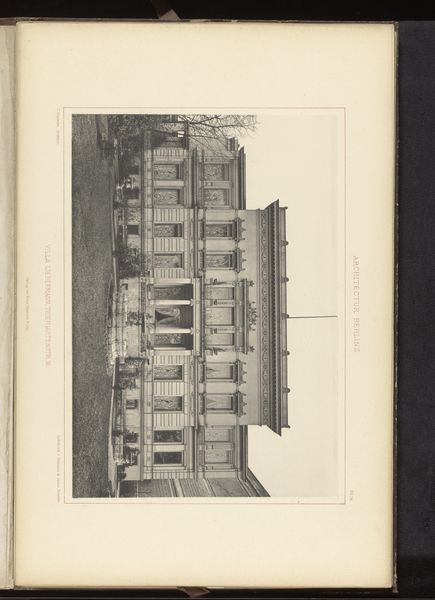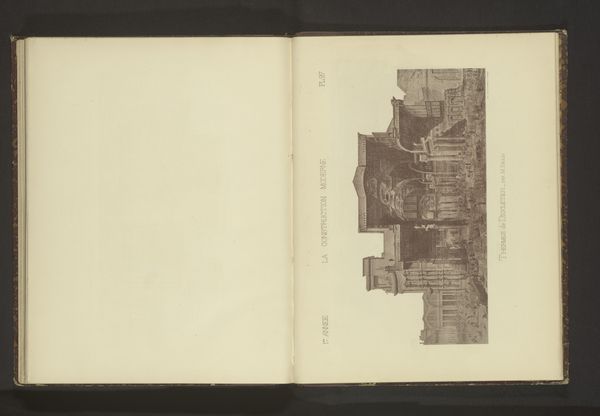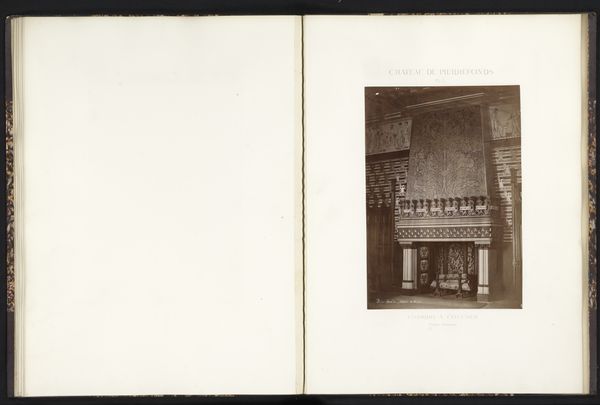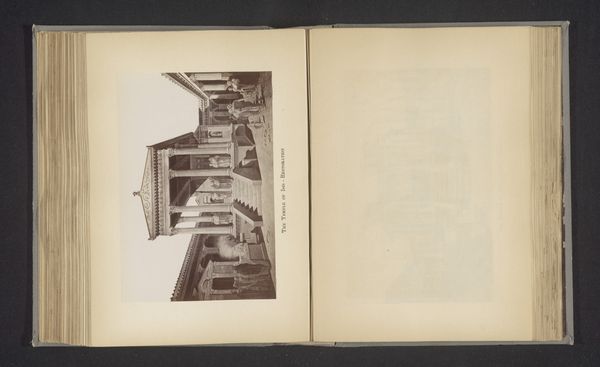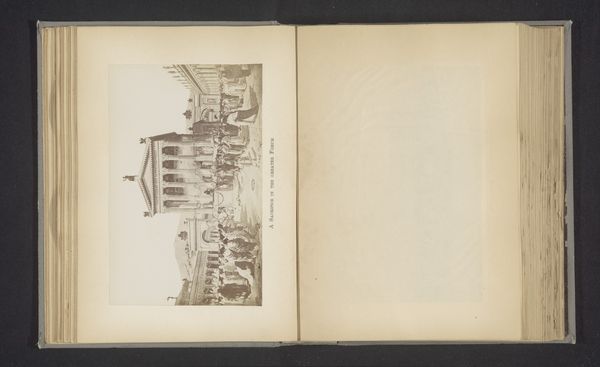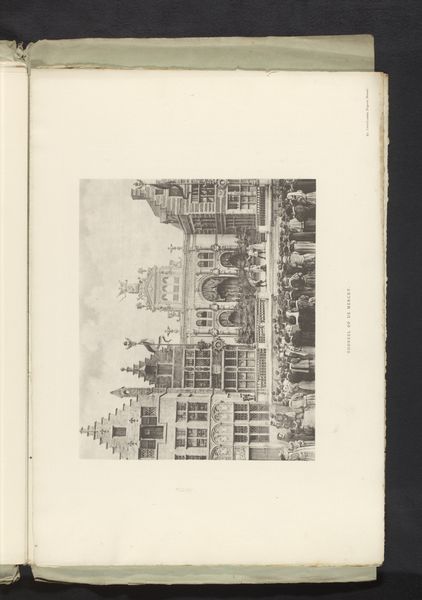
print, photography, architecture
#
medieval
# print
#
landscape
#
photography
#
architecture
#
building
Dimensions: height 198 mm, width 260 mm
Copyright: Rijks Museum: Open Domain
Editor: So, we're looking at a print, likely a photograph, titled "Westzijde van de kathedraal van Monreale," placing it sometime before 1886. It depicts the west side of the Monreale Cathedral in Sicily. The weathered stone and the way it's presented within this book give it a strong sense of historical weight. What jumps out at you when you look at this image? Curator: Well, instantly I consider the public role of architecture like this cathedral and its imagery. Religious institutions have historically wielded immense power, haven't they? How did showcasing architectural marvels such as this, through accessible mediums like photography and print, contribute to that power dynamic? Editor: That's a great question. I hadn’t thought about it in terms of power. So, the wide distribution of these images, they could control the narrative of its grandeur? Curator: Precisely. Think about who this image was intended for. Was it the local populace already familiar with the cathedral, or a more distant audience, perhaps a wealthy collector, or academic institutions? Its purpose dictates the reception. Were these images used as a display of power through documenting colonial architectural successes? Or possibly used in studies by historical researchers? It would all shape the interpretation. Editor: I see your point. The photograph as more than just documentation. It's an artifact embedded within layers of social context. What about the choice to show the *west* side specifically? Curator: Interesting observation! Churches in Europe face east. Why highlight the west side? Perhaps to display this western façade as the entry point, facing and thus welcoming Rome? Or is it simply that the Western facade displays key points for visual narrative or artistic features of architectural intention? This approach helps one begin to peel back layers of historical understanding and sociopolitical context. What do you make of the surrounding landscape and the angle? Editor: Now that you point that out, the orientation seems purposeful. I hadn’t even considered that this wasn’t just an objective architectural study. Thank you, it's fascinating to see how much context is embedded in what I initially perceived as a simple image! Curator: Exactly! That active questioning and historical diving reveals just that; its simplicity is deception. It leaves you wondering and inspired!
Comments
No comments
Be the first to comment and join the conversation on the ultimate creative platform.

